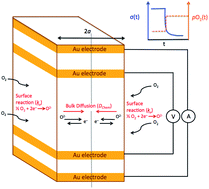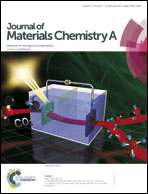An electrical conductivity relaxation study of oxygen transport in samarium doped ceria
Abstract
The efficacy of the electrical conductivity relaxation (ECR) technique for investigating the oxygen transport properties of mixed conducting oxides has been evaluated. Fifteen mol% samarium doped ceria (SDC15), for which approximate values of the two principal transport properties, bulk oxygen diffusivity, DChem, and surface reaction rate constant, kS, can be found in the literature, was chosen as the benchmark material against which to validate the methodology. Measurements were carried out at temperatures between 750 and 850 °C and over a wide range of oxygen partial pressures. An unexpectedly high p-type electronic transference number enabled ECR measurements under oxidizing conditions. A systematic data analysis procedure was developed to permit reliable extraction of the kinetic parameters even in the general case of simultaneous bulk and surface limitation. The DChem from this study showed excellent qualitative and quantitative agreement with expected values, falling in the range from ∼2 × 10−5 to 2 × 10−4 cm2 s−1. The surface reaction constant under H2–H2O mixtures also showed good agreement with literature results. Remarkably, this value increased by a factor of 40 under mixtures of CO–CO2 or O2–Ar. This observation suggests kinetic advantages for production of CO rather than H2 in a two-step solar-driven thermochemical process based on samarium doped ceria.


 Please wait while we load your content...
Please wait while we load your content...